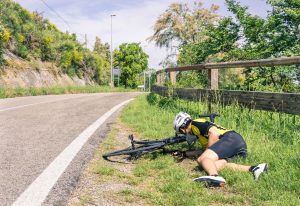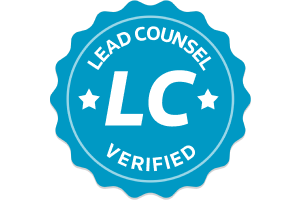- Free Consultation: 866-966-5240 Tap Here To Call Us
Criminal Charges Filed Against Driver Who Hit Six Cyclists

In Sept. 2021, an incident involving a 16-year-old teenager who struck six cyclists after blowing clouds of exhaust fumes on a group of cyclists was widely reported in the news media. The incident happened in Texas. Initially, the teen was released by the police from the scene without charges. However, the district attorney’s office in the county where the incident happened recently filed charges against the teen.
While the case is pending in Texas, if a similar incident happened in California, the perpetrator would also likely be charged with serious crimes. In either state, the injured victims would also be entitled to pursue compensation through personal injury claims regardless of the outcome of the criminal case against the defendant. Here is some information about the incident and how it might be handled if it happened in California.
Texas incident
On Sept. 25, a group of cyclists were training for the Ironman Texas athletic competition and were cycling through Waller County, Texas. A 16-year-old boy was driving a pickup truck that had been modified to allow the driver to release thick clouds of exhaust fumes, an action that is colloquially known as “rolling coal.” The teenager began spewing exhaust fumes on the group of cyclists before striking six who were cycling in front of his vehicle.
The teen stopped and remained at the scene. All six cyclists were injured, and three suffered serious injuries. Officers with the Waller Police Department responded to the scene. Instead of placing the teen under arrest, the officers released him without charges. This sparked national media attention and outrage, and reports later revealed that the teen had connections to members of the Waller City Council.
On Nov. 8, the Waller County District Attorney’s Office announced that it had filed six felony counts of aggravated assault with a deadly weapon against the young man. The DA’s office stated that the police had not properly investigated the accident and had failed to notify the District Attorney’s office when the accident occurred. The teen reportedly surrendered to authorities and is being held in custody until a court appearance.
How would a similar case be handled in California?
If this case had happened in California, the teenager would have been charged with six counts of aggravated assault with a deadly weapon under Cal. Pen. Code § 245(a)(1). California does not have a separate statute for aggravated vehicular assault and classes this type of offense under the umbrella of aggravated assault with a deadly weapon. In this type of scenario, the truck itself would be considered to be a deadly weapon.
Under this statute, a person who assaults someone else with a deadly weapon other than a firearm commits a felony. A conviction could result in a prison sentence of two, three, or four years and a fine of up to $10,000. Since the teen was charged with six counts of aggravated assault with six victims, he would face 12 to 24 years and a fine up to $60,000 if he was charged as an adult in California. However, since he is a juvenile, it is likely he would be adjudicated in the juvenile justice system and could be held in the custody of the Division of Juvenile Justice for a maximum period until he reached age 25.
Under Cal. Welfare & Inst. Code § 707(b), prosecutors in California can choose to directly charge juveniles as adults when they are at least 14 years old and are accused of committing certain offenses listed in the statute. One of the offenses for which a juvenile can be charged as an adult is an assault using force likely to cause serious bodily injury. Using a truck to forcibly run over six cyclists would likely qualify, so it is possible that if this incident happened in California that the teen would be charged as an adult and face adult criminal sentencing.
Potential civil lawsuits
In either Texas or California, the cyclists who were injured by the teenager would also have the right to pursue compensation by filing personal injury lawsuits. These types of legal actions can be filed against defendants even when the defendants have criminal cases pending against them. The prohibition against double jeopardy does not apply when people are facing legal actions under two different bodies of law. Since personal injury cases are civil actions and not criminal cases, civil and criminal cases can be filed against a defendant for the same conduct and proceed simultaneously.
Civil tort lawsuits do not carry the potential for incarceration while criminal cases do. Instead, civil lawsuits are filed to pursue monetary damages to compensate victims for their economic and noneconomic losses. Since defendants in personal injury lawsuits do not face the potential loss of their freedom and civil liberties, the burden of proof required of civil plaintiffs is lower than the burden of proof required of criminal prosecutors.
Civil vs. criminal cases
A criminal prosecutor is required to prove the elements of a crime beyond a reasonable doubt before a defendant can be found guilty. By contrast, a civil plaintiff must prove the elements of a tort offense by a preponderance of the evidence to hold a defendant liable to pay damages. This is a much lower legal burden and means that a plaintiff in a personal injury case must present evidence showing that an incident more likely than not happened in the way the plaintiff argues it occurred. The differences in the burden of proof in criminal and civil cases mean that it is sometimes possible to hold a defendant accountable in a civil case even when he or she is found not guilty in a criminal case for the same incident.
A famous example of this difference happened in the civil and criminal cases filed against O.J. Simpson during the 1990s. While he was found not guilty of murdering Ronald Goldman and Nicole Brown Simpson following his criminal trial, he was found liable in the civil wrongful death lawsuits filed against him by their surviving family members.
Filing personal injury lawsuits against criminal defendants might provide a way for victims to hold them accountable for their wrongful actions even if they might be found not guilty in their criminal cases. In situations in which the defendant’s conduct was especially egregious, punitive damages might also be available in addition to compensatory damages.
Identifying defendants and potential sources of recovery
In cases in which a teenage driver is at fault for causing a serious injury accident, the victims can file claims against the driver’s insurance policy. However, when serious injuries are involved, a teen driver’s insurance policy limits might not be enough to cover the victims’ losses.
For example, California only requires motorists to carry liability insurance in the following minimum amounts:
- $15,000 for bodily injury or death to one person
- $30,000 bodily injury for two or more victims per accident
- $5,000 for property damage
In a case like this one involving six injured cyclists and damage to six expensive racing bicycles, these policy limits would clearly be insufficient to cover the victims’ losses.
If the teen involved only had insurance with the minimum policy limits in a similar situation in California, it would be important to identify other potential sources of recovery to ensure that the victims were fairly compensated. Other sources in this type of case might include the teenager’s parents and the cyclists’ uninsured and underinsured motorists coverage.
Potential liability of the parents
Some states allow plaintiffs to pursue a legal theory called the family purpose doctrine. In those states, car accident victims can hold the parents of a minor driver vicariously liable in an accident when a vehicle driven by the teen is used by the family for family purposes. However, California does not recognize the family purpose doctrine. Despite this, it is still possible that the teen’s parents could be held directly liable through a theory called negligent entrustment.
The owner of a vehicle can be held liable for negligent entrustment of a vehicle to a driver when a plaintiff can present evidence proving the following elements:
- The driver negligently operated the vehicle.
- The defendant owned the vehicle that the negligent driver was driving.
- The defendant knew or should have known that the defendant driver was incompetent or unfit to drive the vehicle.
- The defendant gave permission to the driver to drive the vehicle.
- The negligent driver’s incompetence substantially contributed to the accident and resulting injuries.
If the victims would be able to prove that the teen’s parents owned the truck and gave him permission to drive it despite knowing that he was incompetent or unfit to drive it, they could be liable to pay damages under a negligent entrustment theory. Since the parents likely have more assets available to pay damages, pursuing a negligent entrustment cause of action against the parents as well as a negligence cause of action against the teen driver might help the victims to recover fair compensation.
UM/UIM coverage
Another potential source of recovery is the victims’ UM/UIM coverage. If the victims have this type of coverage on their insurance policies, they can file claims under it. UM/UIM coverage pays damages that exceed the policy limits of the at-fault driver’s policy up to the policy limits of the UM/UIM coverage.
Consult with a lawyer
Cases like the one that happened in Texas are horrifying. However, similar incidents sometimes occur everywhere in the U.S., including in California. If you were seriously injured in a bicycle accident caused by a driver who was engaged in intentional conduct, you may have the right to pursue compensation through a personal injury lawsuit. Contact the law firm of Steven M. Sweat, Personal Injury Lawyers, APC today to schedule a free consultation.












